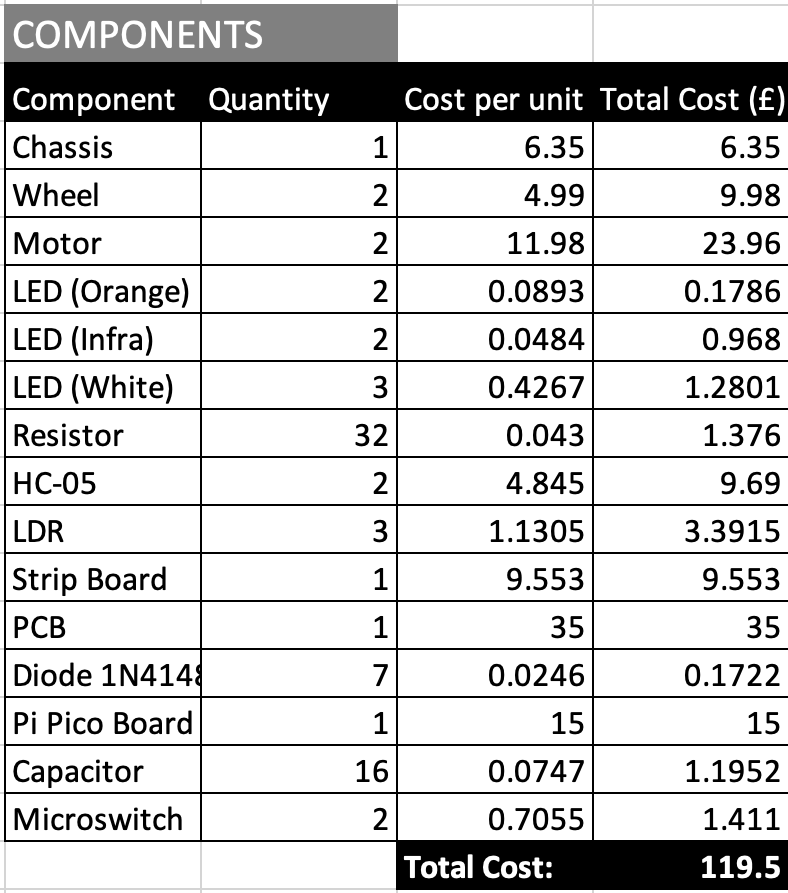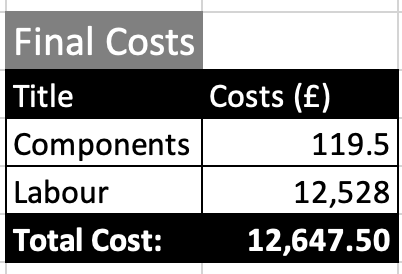Xiaoyu Xi (2325081)
As a student member of IET, it is imperative for me to uphold honesty and integrity in my academic pursuits. In my current coursework, I must refrain from engaging in any conduct that infringes upon the research findings of others. It is essential that I independently complete tasks or seek assistance from tutors whenever necessary. Furthermore, in my present studies and experiments, even when dealing with minor projects and details, it is crucial to adopt a rigorous approach towards experimental data to obtain more accurate results.
As a future professional engineer, it is incumbent upon me to adhere to moral principles and maintain high standards of professional ethics. This entails practicing honesty, fairness, impartiality, transparency while also demonstrating respect for life, protecting the environment, abiding by the law, and safeguarding public interests when selecting research materials. Additionally, conducting experiments with meticulousness and approaching problems from a professional standpoint are vital qualities that should be cultivated. Lastly, as both a team leader and member alike; leadership skills along with effective communication abilities are indispensable attributes required for objective consideration (RAE/EC 2017).
Professional behavior standards encompass an area we must duly consider as members of IET since strict regulations exist within this domain which serve to protect the rights of employer’s organizations as well as members (IET 2019). Of course, the requirements for a professional engineer must not be limited to these, and the Code of Ethics for engineers written by NSPE also mentions that we need to implement our professional obligations, among which we should always strive to serve the public interest, which makes me the most profound, advocating that we should start from some small things around the community to benefit the society (NSPE,2019). I have chosen this source for explanation purposes due to its official certification. Additionally, it provides information that has not been mentioned in the other two sources, which serves as a valuable alert and learning opportunity for me. Moreover, it enables me to enhance my understanding of professional ethics.
Reference
- IET. (2019). Rules of Conduct. https://www.theiet.org/about/governance/rules-of-conduct/
- NSPE. (2019). NSPE Code of Ethic for Engineers. https://www.nspe.org/resources/ethics/code-ethics
- RAE. & EC. (2017). Statement of Ethical Principles. https://www.engc.org.uk/standards-guidance/guidance/statement-of-ethical-principles/

Sustainability…
Here is a table of components with all costs of all the components used, and all of the wages of the group working on this project.


*Rate is based on the Median hourly earnings for full-time employees in the United Kingdom in 2023
The Ethics of Autonomous Vehicles:
In the burgeoning field of autonomous vehicle technology, the moral and ethical responsibilities of engineers and developers are pivotal. This concern becomes particularly significant when potential design flaws could result in harm, such as the risk of an autonomous vehicle causing pedestrian fatalities. Here, I delve into the ethical responsibilities outlined by the Institution of Engineering and Technology (IET) concerning whistleblowing, and explore how these principles should guide the actions of a development team facing such a critical issue.
The Duty to Whistleblow
Under the IET’s Rules of Conduct and its guidance to members on whistleblowing, engineers are mandated to uphold the safety, health, and welfare of the public in their professional duties. If a design flaw is discovered that could potentially lead to fatal consequences, the responsibility to act is clear. The team must prioritize public safety above all else, which includes reporting the risk through the appropriate channels within the company, and if necessary, to external authorities.
Whistleblowing is not just a moral duty but a professional obligation. It requires courage and integrity, given the potential repercussions. However, the primary aim is to prevent harm, making it not just a professional responsibility but a societal one.
Corporate Response and Protection for Whistleblowers
Ideally, the company should respond to such whistleblowing with an open and constructive approach. The initial steps would involve verifying the claim’s validity, followed by a swift action to rectify the design flaw. This process should be transparent and involve not just the internal teams but also external auditors if necessary, to rebuild trust and ensure the solution’s efficacy.
Companies should protect whistleblowers through clear policies that guard against retaliation. This support is crucial, as it encourages a culture of openness and integrity, essential for continuous improvement in technologies that impact public safety.
Ethical Considerations and Team Decision-Making
Would a team decide to blow the whistle? This decision depends on the company culture, the perceived consequences of whistleblowing, and the moral compass of the individuals involved. Ethically, the answer should unequivocally be yes, given the potential risks involved. Teams must be prepared to face the possible challenges in whistleblowing, including personal and professional risks. However, the decision to proceed should be supported by the ethical guidelines provided by the IET and the overarching need to protect public safety. Whistleblowing in the context of autonomous vehicle development is not just about pointing out flaws; it is about actively contributing to the safety and reliability of innovations that have the potential to redefine our societal landscape. For engineers faced with this dilemma, the path is clear—uphold ethical standards and prioritize public welfare. Companies, in turn, should foster an environment where such ethical concerns are heard and acted upon with the seriousness they warrant. Only through such collective responsibility can the future of autonomous vehicles be safely assured.
The Future Of The Website
Throughout the assessment period we will make sure that the website will be fully finished and ready for everyone to see all the amazing work we have done this year. This will include detailed but interesting sections on the different areas of the micro mouse, coming up against any problems we faced and last minute struggles that we overcame in the end and a short description on any tips we would give to anyone starting their own micromouse project next year.
No Responses